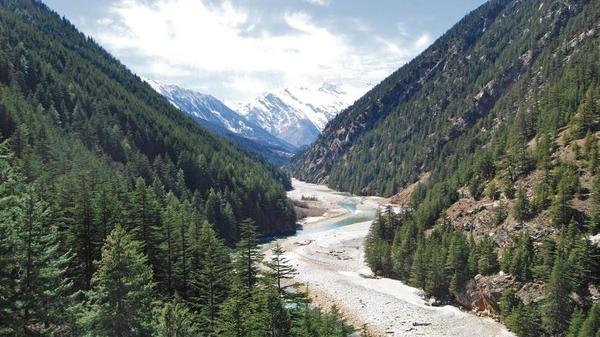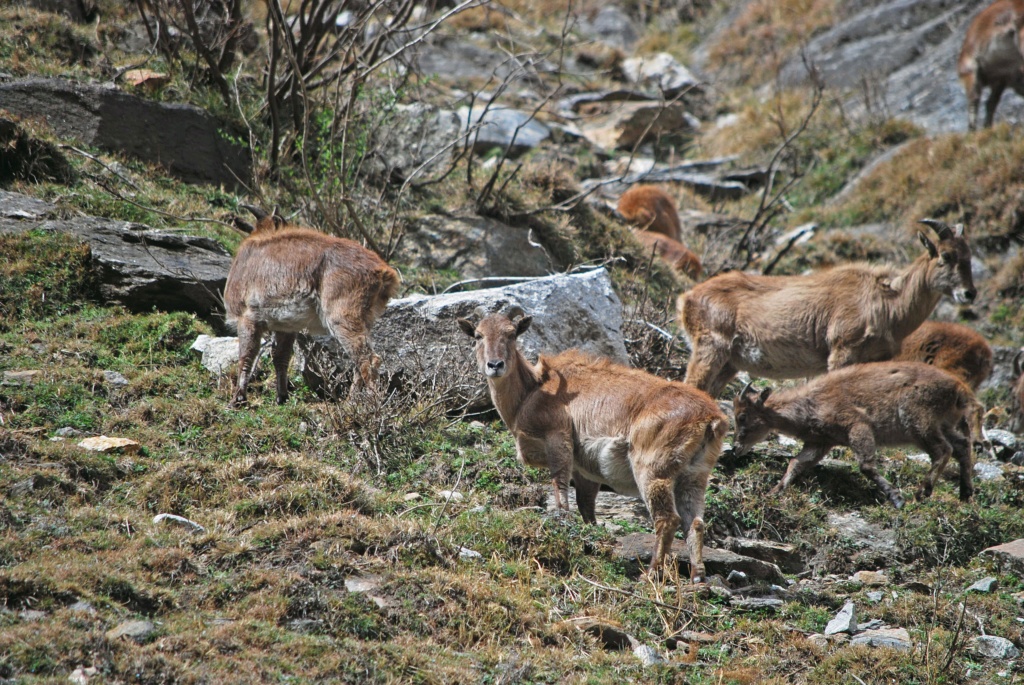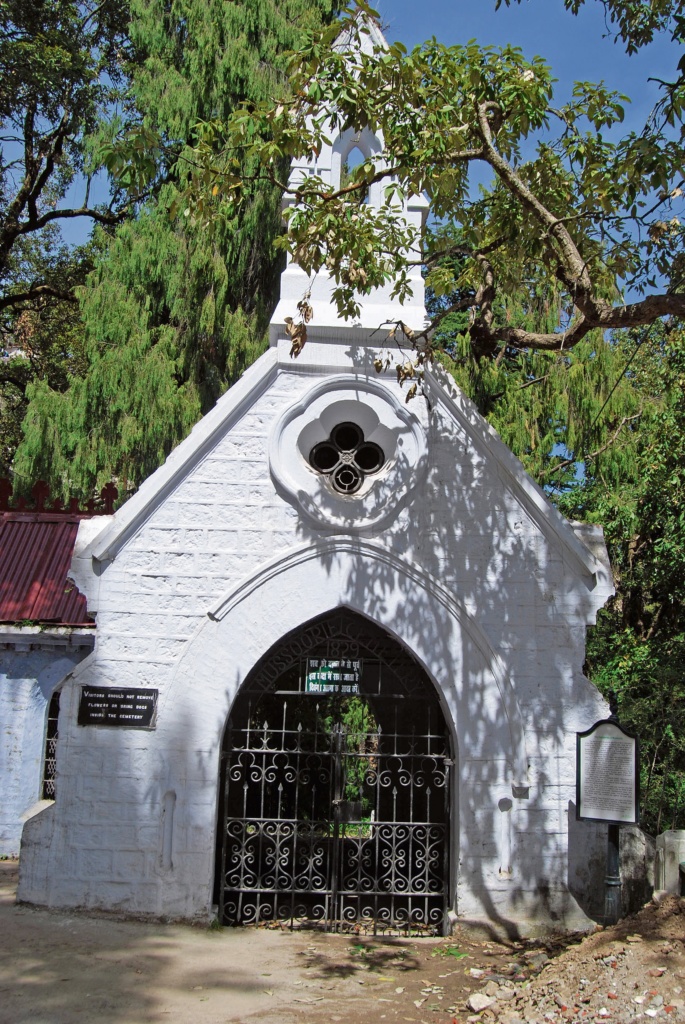On a solo bike ride in Uttarakhand, the story of Pahari Wilson was enough reason to follow in his footsteps

First published:
https://www.livemint.com/mint-lounge/features/looking-for-pahari-wilson-1560595065004.html
Looking for Pahari Wilson
A writer rides up into the Garhwal Himalaya to trace the legend of a former British army deserter who became the raja of Harsil
The 800-odd kilometres had taken their toll, especially while riding across the scorching plains from Lucknow, until the climb started towards Mussoorie. As I finally relaxed on the front lawns of the Himalaya Castle, the hotel’s portly proprietor dropped in for a cordial exchange.
There were few guests in the month of April and cups of tea started doing the rounds. It was somewhere during the fourth serving that he told me how his property, once called the Himalayan Club, had witnessed the unfolding of a number of scandals and machinations during the British Raj. Soon, I was escorted through a section that was once the life of the club. It lay in disarray, with motes of dust dancing about in the rays of light before settling down on tastefully crafted railings made of Burma teak.
When the owner’s daughter mentioned a few well-known British names who had been frequent visitors during boozy evenings, the mention of a “Pahari Wilson” got my attention. Turns out he was a deserter from the British army who had arrived in Mussoorie before heading north to make his home in Harsil. Over a century later, the locals still recall him fondly. The following day, I set out to script the next chapter of my own motorcycle diary, “In search of Wilson”.
***
The lower reaches of Uttarakhand are well-connected to the plains. But as one continues north, a sense of solitude sets in for the lone rider on winding roads that seem to stitch the mountains together in a single seam. I later realized that I had followed the same route taken by Wilson on his trusted steed, which perhaps needed as much goading on the hill roads as my old 350cc Royal Enfield. When army convoys made an appearance, it was reason enough to halt at the nearest dhaba to tuck into some freshwater fish from the Tehri reservoir. The maharaja’s palace that Wilson had visited had long been submerged by the dam, so I continued on to the last major town en route, Uttarkashi.
April is a strange time to visit these parts. During summer, the road is packed with smoky tourist vehicles snaking their way uphill to the pilgrim town of Gangotri, which lies beyond Harsil. With the Gangotri temple still shut for the winter and most locals beyond the village of Gangwani having moved down to warmer climes, the road was relatively desolate.
Around one bend, though, there was a flurry of activity. A group of vultures was picking on the carcass of a calf. They were bigger than the wheel of my motorcycle, but painted a rather amusing picture as they dawdled down the mountainside in little hops for their turn. I kept taking photographs of them, until I realized that one seated on a rock to my left was taking a keen interest in me. I hurriedly donned my helmet and sped off.

Riding across two bridges and passing from the Bhagirathi river’s right bank to the left and back, I wondered how Wilson had traversed these sections, given that his options would have been to continue along the steep walls of the gorge or negotiate the roaring waters of the river below. The climb to Sukhi village past the terraced fields of mustard gave way to a charming vista.
On the descent, old black ice flourished under the canopy formed by chir pine and deodar trees that seemed to extend to the sky. As I rolled into Harsil, I drew curious looks from army personnel in the cantonment just before the village, for no outsiders were expected in these parts just yet. And once in the village, there wasn’t a local in sight either.
I soon learnt from the owner of the lone functional general store that most residents were yet to make their way back home from the village they had moved to before winter set in. I informed him about my search for Wilson. He broke into a smile and suggested I follow him home. In any case, there was no other place where I could spend the night in Harsil.
***
Frederick “Pahari” Wilson, or Hulseyn Saheb, as the locals knew him, had set up base in Harsil sometime during the early 1840s. He took to felling deodar trees and floating them down the Bhagirathi; these were then collected by his men at Haridwar. The timber was used by the British to make railway sleepers while laying out the train network across India.
Wilson made a fortune through this business—as he did by secretly selling pods of musk deer which would roam the slopes near his home. Soon, he began to mint his own coins, handing them out to those who worked for him. It became recognized local currency that could be redeemed for groceries at the local store. For the locals who subsisted on farming and traded with Tibetans over the high passes, Wilson’s enterprise was nothing short of a blessing, and they were happy to consider him one of their own.
The house Wilson constructed in Harsil burnt down in 1999. A forest department rest house stands in its place now. He had married a local girl, Raimatta, daughter of his trusted Man Friday, Mungetu Chand, who would handle things in Wilson’s absence. But when they realized she couldn’t bear him a child, she permitted Wilson to marry again. Wilson’s second marriage was to Gulabi, Mungetu’s sister.
Whether it was the lack of customers or my host’s sheer enthusiasm to narrate what was possibly his favourite story, there was hardly a pause until dark. I asked if there were still any signs of Wilson’s presence. He pointed to the silhouette of a barren apple tree outside the window. The “Wilson apple” variety, introduced by him, had brought prosperity to the valley. He also mentioned a bridge en route to Gangotri that was constructed by Wilson; the following day, I set out in search of it.

***
Each winter, the idol of Ganga Ma is brought down from Gangotri to her second home in Mukhba. When summer arrives, the goddess is taken back to her home. Earlier, on approaching the Jadhganga gorge, the villagers had to make their way down a treacherous route to the base of a cliff, walk across a little wooden bridge that was often swept away by the Jadhganga river, and then make a steep climb to resume their journey. Just descending and ascending these daunting rock faces led to a number of mishaps, especially with the palanquin of the idol in tow.
To make this passage easier, Wilson decided to construct a bridge across the gorge. The story goes that even after it was built, no pilgrim had the courage to use it since it hadn’t been tested.
So Wilson decided to be the first, as a very pregnant Gulabi stood by at one end along with the villagers. As the story goes, Wilson rode his horse across at a canter as the bridge swung from side to side. This was enough to satisfy the doubters, but it was too much for an anxious Gulabi, who gave birth to their first son, Natthu, right by the bridge.
It was a thrilling story, and worth a laugh. The bridge was unlikely to be around after all these years but it provided the perfect excuse to set off on an exploration.
There were almost no vehicles on the road and even fewer people as I continued my climb towards Gangotri. On a few stretches, construction workers preparing the road for the pilgrim season stopped to stare at me, before looking behind me to see if there were other lunatics in tow.
I stopped on a bridge past the hamlet of Lanka, which seemed to be the spot I was looking for. A river rushed far below between steep canyon walls before meeting the Bhagirathi. It was the deepest section I had seen so far, but this cantilever bridge was of modern construction, so I decided to ride on to Gangotri. As I approached my destination, the road became slushy.
Gangotri itself was a ghost town, with its deity still away. After taking a few photographs of my bike in front of the temple, I made my way back to the bridge I had spotted earlier.
I walked down the slope at one end to take a picture of the new cantilever bridge, having concluded that Wilson’s bridge had long been dismantled. As I focused through the viewfinder, I caught sight of two wooden posts in the foreground I had completely missed earlier. There were two more posts at the other end of the expanse. They were placed directly across from each other, and all four were of the same height. Surely, this was where Wilson’s bridge had been erected! Even after a century or so, the deodar stumps were intact, with little sign of weathering.
It was also the deepest section of the route leading to Gangotri, and, when I looked from above, I saw the remains of a small, old bridge at the bottom, one that was probably used by pilgrims even before Wilson’s bridge had been constructed. My host in Harsil later confirmed that the deodar stumps I had seen had indeed held up Wilson’s bridge.
I was delighted to have found a sign of Wilson’s presence, but there was not a soul around to share it with. The evening sun was dipping behind the peaks, and I decided to make my way back to Harsil.
***
The next day, I decided to visit Mukhba, some 4km above Harsil, the winter home of Ganga Ma. When I shared the day’s plan with my host, he asked me to keep a lookout for a few homes Wilson had built for the family of his wives.
The road ran past the other end of the cantonment and ended in a dirt track, which climbed all the way to Mukhba. The river snaking lazily through the valley below grew smaller as snow-capped peaks popped up behind the lower, tree-covered mountains. The road ended and I made a small hike uphill to get to the first home of the hamlet.
A man looked at me curiously; I was quite certain Mukhba didn’t see too many outsiders. I asked him the way to the temple, and then checked with him on “Wilson’s house”. It seemed to shatter a barrier of sorts; he broke into a smile.
“This is Wilson’s home,” the man, Prem Chand, said, as he turned to a two-storey structure behind him.
The house was old but sturdy, with beautiful wooden carvings on the walls. To get to the upper landing, I had to go through a rather low door and up rickety wooden stairs. Chand’s family lived on the first floor.
He called out to his mother, Ramrakhi Devi. She had been married to Mashi, whose grandfather was Mungetu. Even before I could greet her, she set off on a rant on how her belongings had been pilfered by visitors like me. Books, photographs and even some Wilson coins had gone missing. Her son calmed her down and took me away. At her age, he said, she didn’t remember much and she never spared a new face her tirade.
I made my way to the temple, where Chand showed me a gong he claimed belonged to Wilson. Other than the house, this was the only sign of his existence in the village. Behind the grill was the idol of Ganga Ma that thousands of pilgrims make the long journey to greet in Gangotri.
With an incredible story for the next chapter of my diary, I left Harsil to make my way back to Uttarkashi. Descending from Sukhi, I spotted an entire slope dotted with goats. I parked my motorcycle for a closer look, only to realize that these weren’t the usual kind. I followed them up the slope with my camera, realizing that they were gorals (hoofed animals with a goat-like appearance). If these animals were spotted so close to the road-head now, Wilson must have had a field day on hunts.
A short distance ahead, a landslide blocked my path. Just one trip up and down the road to Gangotri had tested my ability. As I sat watching the Bhagirathi race by, I wondered how Wilson had managed it on multiple occasions.
***
Back in Mussoorie, the proprietor of Himalaya Castle was in awe when he heard of my chase. He told me of another home in Landour which had been built by Wilson. I set off to locate it and found it by the side of a narrow road where traffic jams are now common.
The last evening was spent in the hope of catching a famous Mussoorie local who is known to frequent a book store on the Mall—Ruskin Bond. To my dismay, he wasn’t coming.
Sifting through a pile of books, I stumbled upon a title, The Raja Of Harsil.
It may have helped to discover the book by Robert A. Hutchison before I set out for the remote north. Then again, there was the thrill of the chase. I wasn’t complaining.